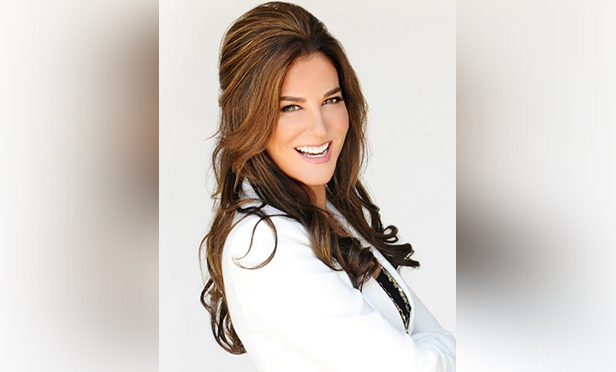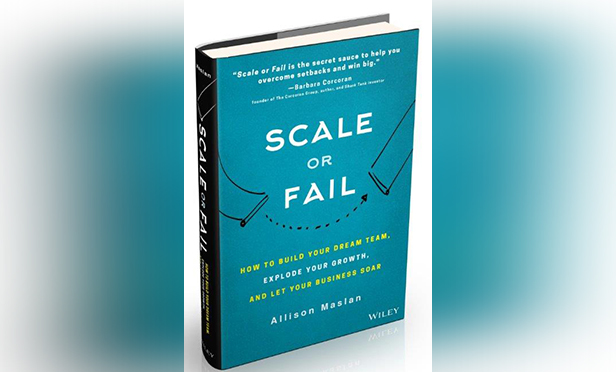 Business coach Allison Maslan.
Business coach Allison Maslan.
Galloping around at a frenetic pace, late and distracted, entrepreneur Allison Maslan ran herself over with her own car. She had failed to put on the parking brake before exiting and was dragged under the front tire and into the middle of the street.
Miraculously, she suffered only a broken collarbone and temporary tire imprints on her legs from the weight of that 4,000-pound vehicle rolling over her. But the trauma shocked the then-28-year-old into realizing she was spreading herself too thin and desperately needed to revamp her way of doing business.
Related: Sales lessons from your (much younger) self
Today, as a mentor and coach, Maslan advises other successful entrepreneurs how to avoid burnout through scaling their businesses — that is, going “from one-to-one” to “one-to-many,” as she tells our sister site, ThinkAdvisor, in an interview.
Related: 10 things successful advisors do
CEO of Pinnacle Global Network, Maslan, 55, has helped thousands of small businesses grow, expand and scale. Her clients include individual financial advisors and firms such as Merrill Lynch, Allstate and Ben & Jerry's. Over three decades, she has built and scaled 10 successful companies from scratch.
In her new book, “Scale or Fail” (Wiley-Oct. 2018), the international speaker details how entrepreneurs can propel themselves to the next level through scaling.
In the interview, she discusses six of 17 strategies advisors can use to scale their practices.
Personal branding is a Maslan specialty, and that was her focus in working with Merrill Lynch advisors. Her own branding hook, the “SCALEit Method,” is based on an acronym: “S” for strategic vision; “C” for cash flow; “A” for alliance of the team; “L” for leadership; “E” for execution.
Years after her harrowing car accident, Maslan dared to take up an unlikely hobby: flying on a trapeze 35 feet up. On the trapeze she had built by Cirque du Soleil equipment-makers, she regularly soars and somersaults in her own backyard.
We recently interviewed the quite fearless flyer, on the phone from her San Diego office. On top of discussing specifics about how FAs can scale, she talked about the psychological parallels between scaling a business and aerial artistry.
Here are highlights:
THINKADVISOR: What's the difference between growing a business and scaling a business?
ALLISON MASLAN: Growth is when you're building your blueprint: getting clear on your target audience, putting yourself out there, building a name. Scale is when you hit bandwidth and need to duplicate and multiply.
Is it possible to scale a financial advisory practice?
Absolutely. Advisors — also doctors and attorneys — often feel that if they're not doing their process [personally], clients will go away. But there are only so many hours in the day. You can't clone yourself. So you need to create a signature process around what you do.

For advisors scaling would also be a way to prepare to sell their practice someday. Isn't it?
Definitely. If you have [additional] recurring revenue, your valuation is going to be much higher. For example, if, on top of their practice [itself], an advisor creates a recurring revenue program, such as a subscription program — giving clients the latest news in the world of compliance, say — or a certification program, it will give the buyer [more] confidence.
What other strategies can advisors use to scale?
Licensing is a great way to get your brand out there in a bigger way. A lot of advisors who love helping people have a difficult time getting out and marketing themselves — as do many entrepreneurs. So with licensing, they can go under the umbrella of their brand and expertise, and be more comfortable because they don't feel like they're selling themselves so much.
What additional scaling strategies are good for advisors?
Adding new locations. Instead of thinking about one-to-one with your client, look at: “How do I get from one to many?” Scaling is replicating what you do and then multiplying that. Leading workshops and events will help build a full brand too.
Buying the competition is another way to scale that you write about.
Right. A lot of people think, “Wow, that's way above my head!” but some [advisors] are ready to move on; and if you can catch them at the right time, there's a whole [book] of clients you can step into.
Must you have a team in order to scale?
You can scale through a team or through your revenue stream. Scaling through a team means training people in your process and then multiplying your numbers by the amount of reach each of them has.
You write that the entrepreneur's ultimate goal is to shift from being the boss to the leader. Please explain.
You want to move from telling people what to do to inspiring them into action. That makes them committed and passionate — and with you for the life of your business.
The first three hours of every day must be focused on sales, you advise. That goes for FAs too?
Yes, unless they have a sales team — and then [sales] should be 24/7. If they don't have a sales team, the advisor should be creating as much visibility as possible — getting out and speaking, doing workshops, social media. There are so many ways to offer expertise. Get on Facebook Live and give some financial tips to build trust and authority.
What do your financial advisor clients say they most want to improve?
In the early stages of their business, they want clients. But an important part they're missing is that they're often not clear on their niche. Unless they're [crystal] clear, people aren't going to hear them — they'll just fall into the bucket with everybody else. They need to stand apart and get specific about who they're helping so that when they're talking to people, they'll go, “Oh yeah! I know somebody in that exact place.”
How did you help Merrill Lynch when the firm was your client?
We helped the advisors create their own personal brand [prior to social media]. Even though Merrill Lynch had a strong brand and name recognition, we helped the advisors [market] what was unique about them so they could stand out from the crowd. It's about trust and building relationships.
You write about CEOs' top roadblocks to business growth. What are some?
If you're trying to scale with the same mindset and practices with which you tried to grow your business, you're going to stay stuck. To scale, you need to rebuild your company from a higher level. If you just [keep growing], you'll stretch yourself and get burned out. You need to take yourself out of the equation so that you're not the bottleneck.
Many entrepreneurs fall prey to what you call the “shiny object syndrome.” Please elaborate.
Their issue is: “Let's do this. Oh no, let's do this! “ It's that they see something isn't working and don't give it enough time. So they're off to something else. If one [product, service] isn't working, it doesn't mean it's a bad strategy. You have to be willing to tweak it until you get it right. That means you must be patient. Most business owners are the worst at patience.
Now turning to your hobby of flipping through the air on a trapeze 35 feet above ground: Isn't it scary?
I get scared every time. But the more you do it, the more confident you become. If I'm learning something new, I'll wear safety lines.
You had a trapeze built for your backyard. Is someone with you when you're flying?
Normally you fly with a couple of other people: a catcher [another trapeze artist], and you need somebody up on the platform with you to hand you the bar. But my husband and I have an agreement: If he's in the yard, I can go up. In case something happens and no one else is there, it's not so good!
What parallels can you make between trapeze flying and scaling a business?
Starting a business is like climbing the [trapeze] ladder: You have to make the commitment that you're all-in. You need to be looking ahead, not down. That's like being stuck in the past. You're never going to move forward because it will be too overwhelming.
What other metaphor?
When you get up on that [trapeze] pedestal, you have to really put yourself out there — be vulnerable and willing to take the lead. So many business owners stay small. They stay stuck because they're not willing to take the risk. They're so afraid of losing everything — and they hold on too tightly.
READ MORE:
5 spring cleaning management tips for brokers
People and processes and culture: Keys to building out your business
© 2025 ALM Global, LLC, All Rights Reserved. Request academic re-use from www.copyright.com. All other uses, submit a request to [email protected]. For more information visit Asset & Logo Licensing.







